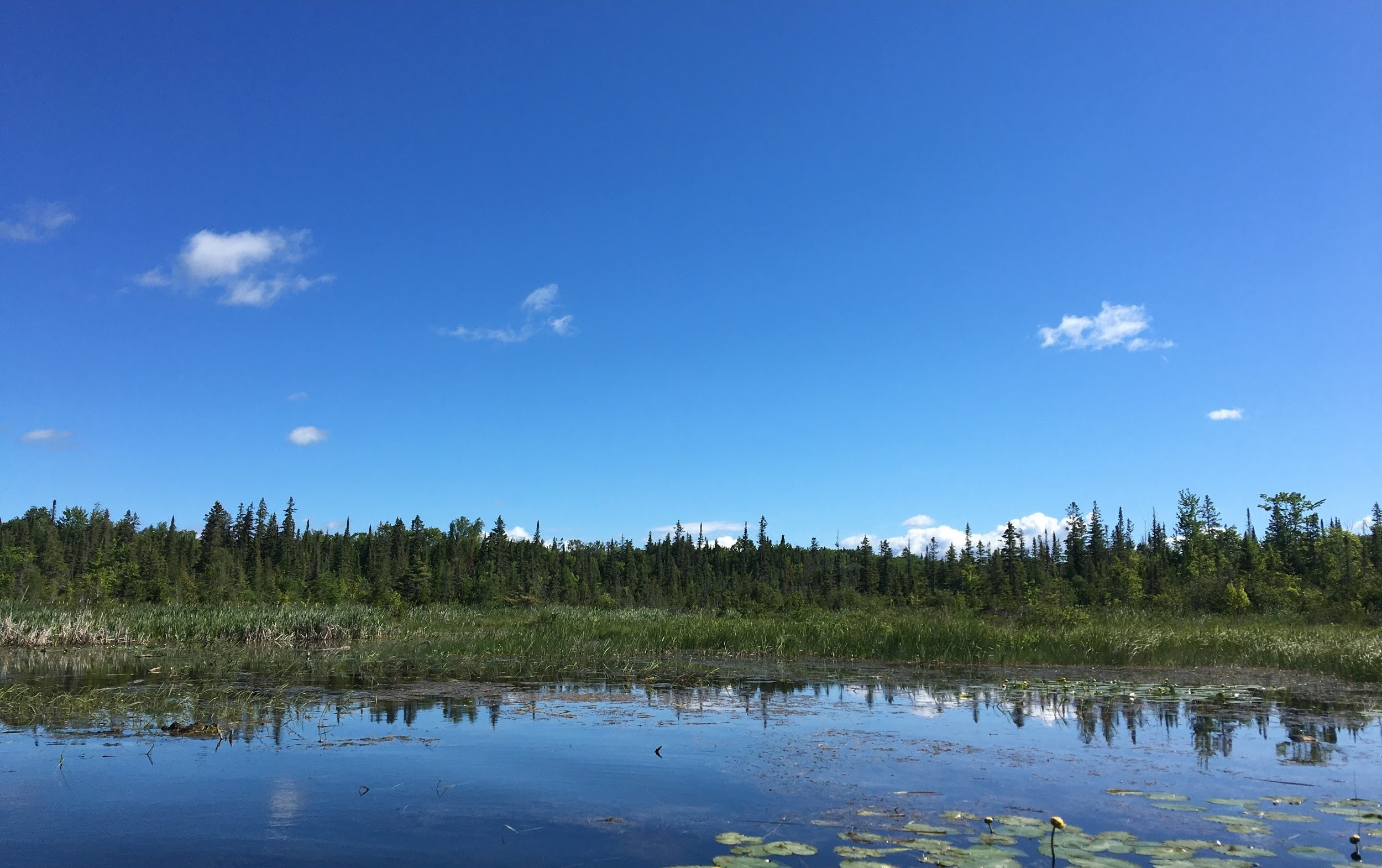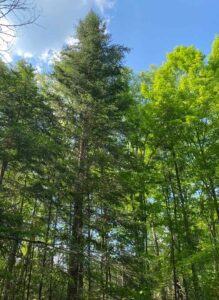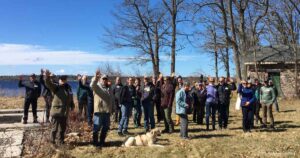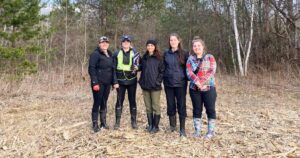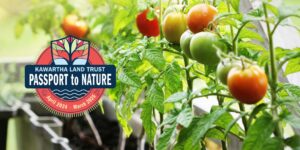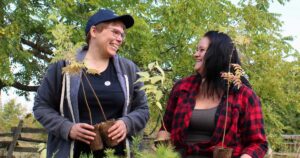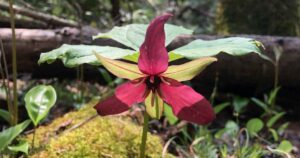Kawartha Land Trust (KLT) is pleased to announce the protection of two new properties in the Kawarthas: Forbes Lane Property and DeNure CEA.
Using two land protection options — outright purchase and Conservation Easement Agreement (CEA) — KLT’s newest protected properties bring the total of the charity’s protected lands to over 5,350 acres.
“When I saw the Forbes Lane property listed for sale, I knew KLT had to take action fast,” said John Kintare, KLT’s Executive Director.
The property’s size — 73 acres — and proximity to lands conserved by other conservation organizations meant that a significant amount of the land is considered interior forest. Interior forest habitat provides more mature and less disturbed habitat for species that rely upon it like the Wood Thrush, a species of Special Concern in Ontario.
The conifer swamp on the property is part of the Dummer Lake South Provincially Significant Wetland (PSW) Complex. Its vernal pools create predator-free breeding habitats for species like the Blue-spotted Salamander and at-risk Western Chorus Frog.
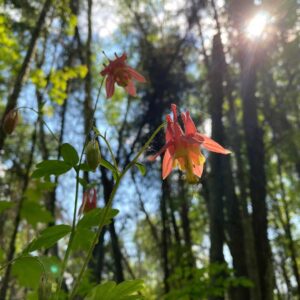
The conservation of the Forbes Lane Property, located in the heart of Douro-Dummer, also ensures that its natural features and important carbon storage capabilities will be safeguarded from future development.
“We had some funding available through Environment and Climate Change Canada’s (ECCC) Nature Smart Climate Solutions Fund (NSCSF) to purchase the property and our incredible donors came through with the rest,” said Kintare.
“Between new donations in response to an urgent call, and previous gifts held in our Land Securement Fund, we were able to put in an offer quickly and snap this property up for under the asking price. This beautiful land is an important connector between other conserved lands in the region, and by permanently protecting the Forbes Lane Property, our donors and ECCC have ensured that nature in the Kawarthas has been strengthened forever.”
***
In another conservation win for the Kawarthas, a 39-acre natural paradise on the northeast side of Balsam Lake is now protected through a Conservation Easement Agreement (CEA) between Steven and Ali DeNure and Kawartha Land Trust (KLT), supported by funding from the Government of Ontario’s Greenlands Conservation Partnership.
The majority of the property is part of the Corben Creek Provincially Significant Wetland (PSW). The mixed swamp contains Balsam Fir, Eastern White Cedar, Aspen, and Black Ash, an Endangered species in Ontario.
This important wetland not only contributes to flood mitigation during heavy rains, but it also aids to the area’s carbon sequestration abilities and provides vital habitat for aquatic birds like herons, ducks, terns, and rails.
“The Ontario government commends the Kawartha Land Trust, the Ontario Land Trust Alliance and the DeNures for securing this natural habitat for endangered hardwood and other precious swamp life” said David Piccini, Minister of the Environment, Conservation and Parks.
“We’ve seen that investing in the protection of natural areas, like the provincially significant wetlands at Balsam Lake, can play an important role in conserving Ontario’s natural diversity, while mitigating and adapting to the effects of climate change. Through the Greenlands Conservation Partnership, we will continue to work with partners to protect and promote more healthy, natural spaces.”

When asked why he wanted to conserve the land, Steven DeNure, a KLT Trustee, noted that he had seen increased development on the lake and he wanted to preserve the wetlands and creek entrance.
“Planning permission had been granted to develop this property into a number of lots and we reversed that potential development when we acquired the properties in 2003 and 2004,” said DeNure.
Having grown up on Balsam Lake, DeNure shared that one of his favourite activities as a child was paddling the canoe up Corben Creek with his siblings.
“In 2003, our father Fred DeNure died, and, with the enthusiastic endorsement of our mother, Dorothy DeNure, we used some of the proceeds of his estate to start to acquire property on either side of the creek with a view to long-term preservation.”
The DeNures’ conservation dreams for the property have been realized through their family’s protection of the land through a CEA with KLT, which ensures the open marsh on the easement will continue to be home to the Great Blue Herons, Great Egrets, and Midland Painted Turtles that can be regularly seen there.
KLT is thankful to the DeNures for their commitment to protecting the land they have loved and cherished for decades.
“Working with landowners to make their families’ protection permanent is one of the great pleasures of my work with KLT,” said Thom Unrau, KLT’s Director of Community Conservation.
“For years, the DeNure family has been stewarding this important wetland, forest, and creek. As a Provincially Significant Wetland and a creek riparian area, the property has outstanding conservation values. The DeNure CEA is an important part of ensuring that nature has the space it needs to thrive on the shore of Balsam Lake.”
—
Learn more about KLT’s Forbes Lane Property.
The ECCC’s Nature Smart Climate Solutions Fund (NSCSF) is a $631-million, 10-year fund to support projects that restore and enhance wetlands, peatlands and grasslands that store and capture carbon. Nature-based solutions are actions that conserve, sustainably manage, and restore ecosystems, helping to mitigate the impacts of climate change, build resilience and improve water quality, and provide critical habitat for Canada’s wildlife.
Conserving and restoring nature is fundamental to mitigating and adapting to climate change. The climate and nature crises are inextricably linked. Climate change is altering the water cycle, resulting in flooding, droughts, and wildfires. It is one of the key drivers of biodiversity loss, which is proceeding at an unprecedented rate with up to one million species currently at risk of extinction. Canada is committed to nature-based solutions to build resilience and help Canada meet its 2030 and 2050 climate change objectives.

—
Learn more about the DeNure CEA.
This property has been secured with the support of the Government of Ontario through the Greenlands Conservation Partnership, which helps conserve ecologically important natural areas and protect wetlands, grasslands and forests that help mitigate the effects of climate change.
Through the Greenlands Conservation Partnership, a total of $50 million will be invested over four years, including $20 million from the Ontario government, and another $30 million from other sources, such as individual donations and foundation support through the Nature Conservancy of Canada (NCC) and the Ontario Land Trust Alliance (OLTA), and other levels of government.


